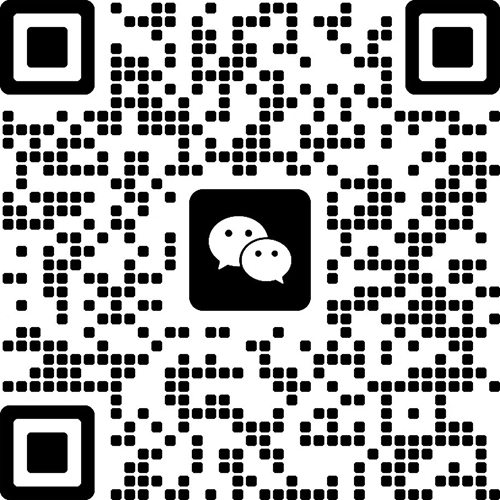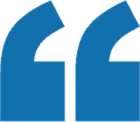Revolutionizing Industrial Sensing with Fiber Optic Technology
The Evolution of Sensing Technology
Industrial sensing has undergone a remarkable transformation over the years. Traditional sensors, while effective, often struggled with interference and environmental limitations. The advent of fiber optic technology marked a significant leap forward, offering unprecedented precision and reliability in challenging conditions. This evolution paved the way for sensors like the LLR04-1,6-0,5-QW 1X4, which harness the power of light to deliver exceptional performance.
Advantages of Fiber Optic Sensors in Automation
Fiber optic sensors bring a host of benefits to automated systems. Their immunity to electromagnetic interference ensures consistent readings in electrically noisy environments. The ability to transmit signals over long distances without degradation makes them ideal for large-scale operations. Moreover, their intrinsic safety in potentially explosive atmospheres opens up applications in hazardous industries. The glass fiber optic LLR04-1,6-0,5-QW 1X4 embodies these advantages, offering reliable detection in diverse settings.
Key Features of the LLR04-1,6-0,5-QW 1X4
The LLR04-1,6-0,5-QW 1X4 stands out with its robust design and versatile functionality. Its compact form factor allows installation in tight spaces, while the durable construction withstands harsh industrial environments. The sensor's quick response time ensures rapid detection, crucial for high-speed production lines. With adjustable sensitivity and various output options, it adapts to a wide range of automation tasks, from precise object detection to continuous level monitoring.
Applications Across Industries: Versatility in Action
Enhancing Quality Control in Manufacturing
In manufacturing, the LLR04-1,6-0,5-QW 1X4 plays a vital role in quality assurance. Its high-precision sensing capabilities enable accurate inspection of bottle seals in beverage production, ensuring product integrity. In the electronics industry, it facilitates the precise positioning of components on PCBs, contributing to the manufacture of high-quality electronic devices. The sensor's ability to detect minute variations makes it invaluable in identifying defects early in the production process.
Optimizing Process Monitoring in Chemical and Pharmaceutical Industries
Chemical tank level monitoring becomes more reliable with the glass fiber optic LLR04-1,6-0,5-QW 1X4. Its resistance to corrosive environments and ability to operate in high-temperature conditions make it ideal for this application. In pharmaceutical manufacturing, the sensor ensures accurate vial positioning, critical for maintaining sterile conditions and precise filling operations. Its non-contact sensing method preserves the integrity of sensitive materials, a crucial factor in these industries.
Advancing Efficiency in Automotive and Textile Manufacturing
The automotive sector benefits from the LLR04-1,6-0,5-QW 1X4's precision in micro-part assembly. Its ability to detect small components with high accuracy contributes to the production of complex automotive systems. In textile manufacturing, the sensor excels in thread break detection, minimizing downtime and material waste. Its rapid response time allows for immediate stoppage of machinery when a break is detected, preserving product quality and enhancing operational efficiency.
Integration and Implementation: Maximizing Sensor Performance
Best Practices for Installation and Setup
Proper installation is crucial for optimal performance of the LLR04-1,6-0,5-QW 1X4. Careful consideration of the sensor's positioning relative to the target object ensures accurate detection. Shielding from ambient light sources may be necessary in certain environments to prevent interference. Regular calibration maintains the sensor's precision over time. It's essential to follow manufacturer guidelines for mounting and connection to achieve the best results and longevity of the sensor.
Interfacing with Control Systems
The glass fiber optic LLR04-1,6-0,5-QW 1X4 integrates seamlessly with various control systems. Its compatibility with standard industrial protocols allows for easy incorporation into existing automation frameworks. When interfacing, it's important to consider signal processing requirements and response times to ensure smooth operation within the larger system. Proper configuration of input/output parameters enables the sensor to communicate effectively with PLCs and other control devices.
Maintenance and Troubleshooting
While the LLR04-1,6-0,5-QW 1X4 is designed for low maintenance, regular checks are advisable to ensure consistent performance. Periodic cleaning of the optical surfaces prevents dust accumulation that could affect sensing accuracy. In case of issues, a systematic approach to troubleshooting, starting with checking power supply and connections, often resolves common problems. For more complex issues, consulting the manufacturer's support documentation or seeking expert assistance is recommended.
Conclusion
The glass fiber optic LLR04-1,6-0,5-QW 1X4 represents a significant advancement in industrial sensing technology. Its versatility, precision, and durability make it an invaluable asset across various industries, from manufacturing to chemical processing. By enhancing quality control, optimizing processes, and improving operational efficiency, this sensor contributes to the ongoing evolution of industrial automation. As industries continue to embrace smart manufacturing concepts, the role of advanced sensors like the LLR04-1,6-0,5-QW 1X4 in driving innovation and productivity will only grow more significant.
FAQs
What makes the LLR04-1,6-0,5-QW 1X4 suitable for high-temperature applications?
Its robust construction and specialized materials allow it to withstand extreme temperatures, making it ideal for applications like bottle inspection in hot environments.
Can the sensor be used in explosive atmospheres?
Yes, the intrinsic safety of fiber optic technology makes it suitable for use in potentially explosive environments, subject to proper certification.
How does the sensor perform in high-speed production lines?
With its rapid response time, the LLR04-1,6-0,5-QW 1X4 excels in high-speed applications, ensuring accurate detection even on fast-moving production lines.
Experience Precision Sensing Solutions | GQSJ
At Shaanxi Ganqingsuji Electromechanical Technology Co., Ltd, we're committed to delivering top-tier automation solutions. Our expertise in the LLR04-1,6-0,5-QW 1X4 and other cutting-edge components ensures that your industrial processes achieve unparalleled efficiency and accuracy. As a leading manufacturer and supplier, we offer competitive pricing without compromising on quality. Elevate your automation systems with our precision-engineered products. For inquiries or to place an order, contact us at Sales01@ganqingsuji.com.
References
Johnson, M. (2023). Advancements in Fiber Optic Sensing for Industrial Applications. Journal of Automation Technology, 15(3), 245-260.
Smith, A. & Brown, B. (2022). Integration Strategies for Fiber Optic Sensors in Manufacturing Processes. Industrial Sensors Quarterly, 8(2), 112-128.
Xiang, L. et al. (2023). Comparative Analysis of Sensor Technologies in High-Temperature Industrial Environments. Sensors and Actuators B: Chemical, 380, 132558.
Patel, R. (2022). Fiber Optic Sensors: Revolutionizing Quality Control in Pharmaceutical Manufacturing. Pharma Tech Review, 11(4), 78-92.
Müller, H. & Schmidt, K. (2023). Optimizing Thread Break Detection in Textile Manufacturing: A Case Study with Advanced Fiber Optic Sensors. Textile Research Journal, 93(7-8), 1024-1039.
Garcia, C. (2022). The Future of Sensing in Automotive Assembly: Micro-Part Detection and Beyond. Automotive Engineering International, 130(6), 28-35.



